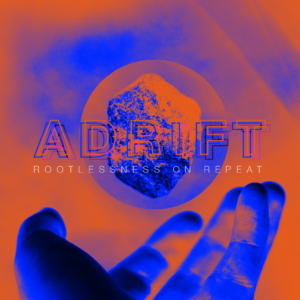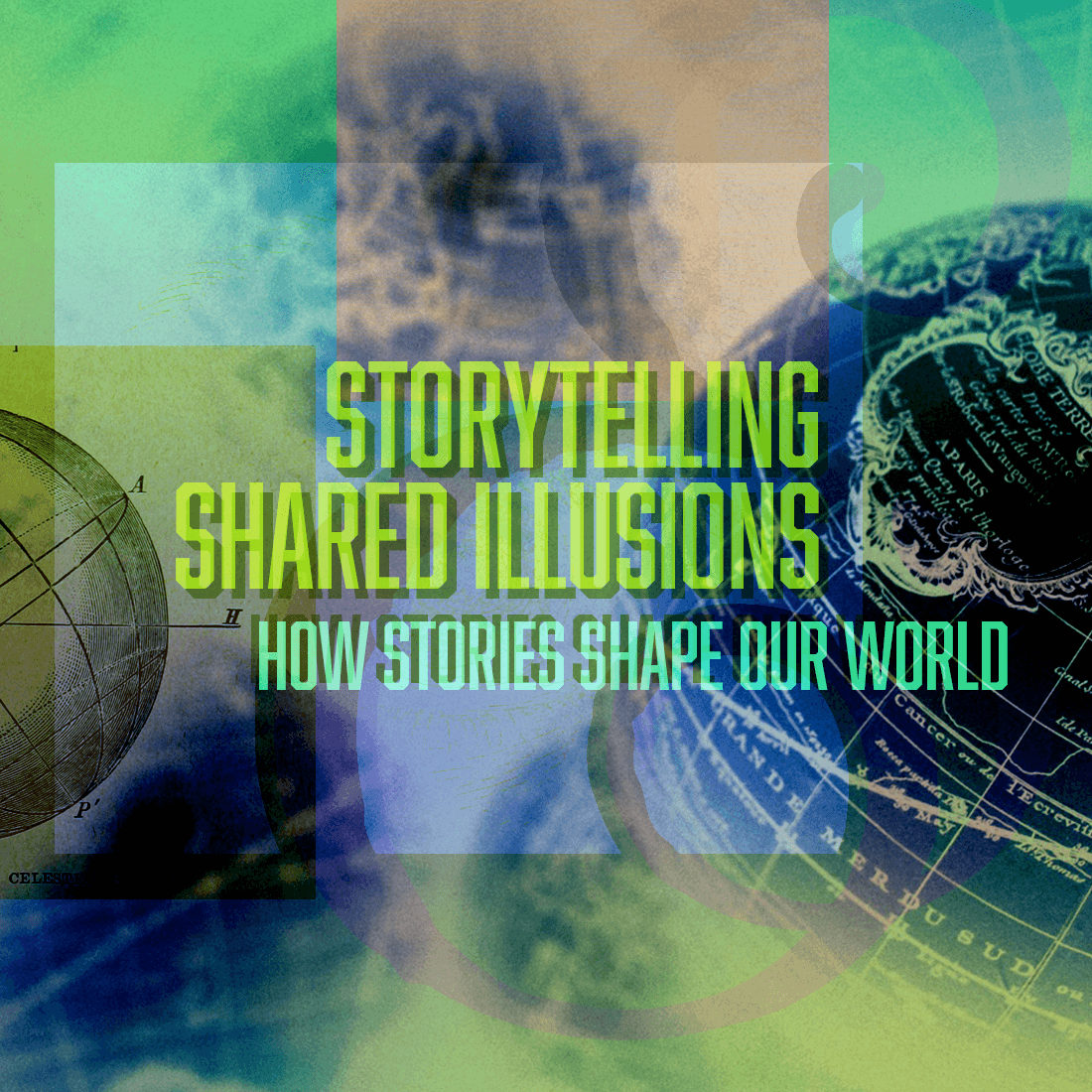NATALIE GALLAGHER
In this issue, we talk to Andrea “Annie” Yetzer, a PhD student in Northwestern University’s social psychology program, and a Chicago native. Her current work focuses on the need to belong, self-conscious moral emotions like shame and guilt, moral identity, and morality in general. She sat down with us to discuss Terror Management Theory, one of latest theories proposed in modern psychology.
Hi Annie, thanks for making the time to do this interview!
Could you describe Terror Management Theory (TMT), in broad strokes?
Andrea Yetzer
Terror Management Theory suggests that the fear of death is the root of all human psychological motivations. Humans are similar to other animals in that we all are organisms geared at survival, but what separates us is that we have the capacity for symbolic, abstract, and future thought, which enables us to conceive of the fact that one day we will cease to exist in this world. That realization, that awareness, is very anxiety-provoking. It’s the “terror” of not being.
The 4 stories we tell ourselves about death | Stephen Cave | Source: © TED/YouTube
In order to protect against that, humans created culture. All of our thoughts and ideas and theories of reality imbue the world with a sense of meaning and purpose and safety, and also provide us important standards of behavior. Living up to those [standards] grants us a sense of either literal or symbolic immortality over death. Literal immortality is the belief in a soul that will live on beyond the physical death of one’s body. Symbolic immortality is about [being] part of something greater than yourself (such as culture), which will live on beyond your death. This can be achieved by tangible artifacts that we leave behind — the first and foremost being our families (e.g., children), but also including works of art that we create, the books we write, the buildings we put our names on. Most importantly, both are granted by living up to one’s cultural worldviews.
The key components of Terror Management Theory are cultural worldviews, self-esteem, and close interpersonal relationships. We derive our self-esteem from the fact that we are living up to our cultural worldviews. This has to be consensually validated; we have to get validation from others that we are actually living up to those standards. This is where you start to see the ingroup-outgroup distinction. Our ingroups share our worldview and let us know that you are a good ingroup member, you are a good person. We derogate or dismiss or even punish those who don’t validate, agree with, or live up to our worldviews. We conversely reward those who do. Cultural worldviews and self-esteem have been central constructs [from the start of] the theory, but later substantiations touching more on the interpersonal relationships came from attachment theorists, Mario Mikulincer and Victor Florian. They provided evidence that the attachment system — early attachment figures (i.e. caretakers, parents) and close interpersonal relationships — are really a functional part of terror management.
The Attachment Theory: How Childhood Affects Life | Source: Sprouts/YouTube
There are a couple of very specific hypotheses from the theory. The first being the anxiety buffer hypothesis: cultural worldviews, self-esteem, and closer personal relationships work together as an anxiety buffer. These are the things that protect us from this potential for terror. So this often results in striving for self-esteem, or bolstering one’s worldview, or seeking close proximity to our close interpersonal relationships or attachment figures. Then there’s the mortality salience hypothesis: death reminders propagate these responses. Finally, the death thought accessibility hypothesis — threats to worldviews, self-esteem, and interpersonal relationships (i.e. any part of the anxiety buffer) will result in increased death thought accessibility.
What sorts of behavior have been addressed in a TMT framework?
Andrea Yetzer
This is a hard question to answer because there have been over 500 TMT studies done in 26 different countries. The range of things they’ve covered includes the self, cultural worldviews and ideology, politics, religion, intuitive and counterintuitive health behaviors, morality and moral judgments, desire for control, attitudes towards animals, romantic relationships, risk-taking, intergroup contact/bias/prejudice/stereotyping, desire for fame, support for military action, aggression, reactions to art, psychopathology and trauma, and prosocial behavior.
TMT is a dual-defense model. There are both proximal and distal defenses for reminders of death. The proximal are conscious and immediate, while distal are unconscious and later, once reminders of death have left focal attention. For example, following a death reminder, a proximal defense would be to deny death in explicit ways (e.g., saying, “I’m not afraid of death”) or implicitly by increasing health behaviors. But later on people will engage in distal, unconscious defenses (the function of the anxiety buffer) by striving for self-esteem or bolstering their cultural worldviews.
How do you think TMT addresses cultural variability in fear of death and/or mechanisms for dealing with death (e.g. death rituals, etc)?
Andrea Yetzer
The overall theory and connecting the dots looks the same, but the processes look different based on the structure and content of cultural worldviews. For example, East Asian cultures don’t construct their sense of self and self-esteem the way that we do in Western cultures, but they still have a sense of self and collective sense of self-esteem. Following the subscriptions of their particular culture makes them feel good about themselves. They, too, will derogate outgroup members and do some of the same terror management responses that we see in Western cultures. For them, also, reminders of death increase nationalism, negative evaluations of those who criticize one’s culture, support for military action to defend one’s country, and ingroup bias in job allocations.
You might think about other cultures that view death as integral part of life as being less susceptible to reminders of death. But death rituals and reincarnation, these are all forms of literal immortality. They provide a blueprint for how your enduring soul is going to continue on beyond your physical death, whether it’s back down into the earth, whether it’s into another body in the next life, you are still transcending death.
Here, Living With Dead Bodies for Weeks—Or Years—Is Tradition | Source: © National Geographic/YouTube
There’s also evidence of cultural practices, beliefs, or even individual difference variables that are automatically protective. Individuals with high dispositional self-esteem do not react to death reminders. They presumably have this very strong component of their anxiety buffer that’s not phased. People who are high in dispositional mindfulness are also not affected by reminders of death. Some research has shown that Non-Buddhist Koreans react to reminders of death, but Korean Buddhists do not.
Does TMT research tend to focus on positive or negative outcomes?
Andrea Yetzer
There are positive outcomes — I’m going to be more moral or act prosocially, I’m going to live up to all these positive aspects of my worldview, I do want to be a valued social contributor.
But I think TMT overwhelmingly focuses on negative outcomes. TMT research blew up around 9/11 because it became very relevant in how we derogate outgroup members. At the end of the day, when you are protecting yourself from death, it’s wonderful that you have all these beautiful cultural worldviews that give you meaning and purpose, but it also [leads to] a stronger distinction between ingroup and outgroup; that can have negative effects. Striving for self-esteem can be at the expense of being close and connecting with others, so that creates another issue.
Is the fear of death is always about the fear of your own body dying, or could it be about your culture no longer existing, or your family no longer existing?
Andrea Yetzer
I saw this talk at the existential preconference at SPSP last year with Mario Mikulincer. He [discussed] four existential concerns that are relevant for everyday life: mortality, lack of freedom, meaninglessness, and isolation. Mortality equals biological death; lack of freedom equals motivational death; meaninglessness equals cognitive death, and isolation equals social death. Most of the TMT research has really focused on the physical death of the body — when people think about death reminders, they’re asked to describe “what do you think will happen to your body when you die?” But the others are also relevant.
How Different Cultures Dealt With Death | Source: Science Plus/YouTube
Research has shown when you imagine the death of an important attachment figure, it increases your death thought accessibility. If your culture dies, it means the people that also believed in it along with you die, in a sense. If you have no meaning you have nothing to protect you against death. So it’s not always about the death of your physical body, a lot of these are symbolic and abstract.
What brought you into TMT work? How did you move from that to what you’re doing now?
Andrea Yetzer
I worked in Veteran’s Affairs and I was really interested in working with veterans in PTSD and trauma. From there, I went to a program out in Colorado originally to work in coping self-efficacy. I got a message from Tom Pyszczynski — one of the original TMT guys — [about] Anxiety Buffer Disruption Theory, which is an extension of TMT as it pertains to post-traumatic stress disorder (PTSD). And I didn’t know if I was a TMT kind of gal, but this was a unique and different way to investigate [PTSD]. It’s much more of a social psychological perspective, which I appreciated and I really liked that.
One of the areas of trauma that I was interested in was moral injury. It’s a particular trauma dimension that occurs alongside PTSD when part of the [traumatic] event involves a violation of personal moral standards as perpetrator, victim, or witness. I started looking into morality from a terror management theory perspective. I noticed that we don’t really see a lot of [trauma symptoms] kick in until veterans try to reintegrate following deployment. Your definitions, your worldviews of what’s moral and what’s not, are different when you are a unit member out in a war zone. You have your ingroup with consensually validated moral worldviews, but that doesn’t translate to everyday real life when you come back. The biggest thing we see is the uptick in PTSD symptoms and the disruption of relationships when individuals came back and try to reintegrate into regular society and culture. What’s really kicking off is this sense of “I don’t really belong anymore, I’m coming back to people that can’t understand where I’ve been and what I’ve done.” That’s what really brought me here [to Northwestern] to research on belonging, as it pertains to morality and moral identity, and self-conscious moral emotions. I found the work to have far-reaching implications that I didn’t want to be limited to just trauma groups.
Is there anything you want to mention before we wrap up?
Andrea Yetzer
For the interested or motivated reader, if you want to know more about TMT that’s digestible, I would recommend The Worm at the Core: On the Role of Death in Life — TMT writers, they are great storytellers. [There are] also two really good reviews. One was a meta-analysis of TMT effects from Burke; it’s cool because you can see all the different things that they’ve investigated. There’s a wonderful review [of TMT], from 2015, “Thirty Years of Terror Management Theory Research”, and that’s wonderfully, beautifully written by my former advisor.
Thank you so much for your time!





